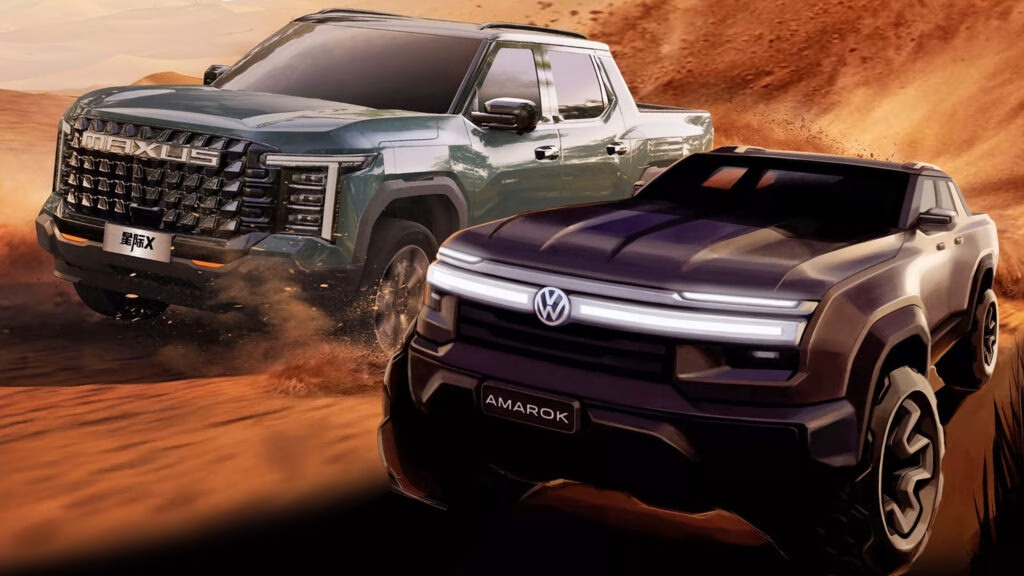Why Is Volkswagen Launching a New Amarok Just for South America?
Volkswagen’s decision to develop a fresh Amarok pickup exclusively for South America isn’t just about chasing trends—it’s a calculated move rooted in local demand, manufacturing realities, and evolving emissions standards. While the rest of the world gets the Ford Ranger-based Amarok, South America’s market dynamics are different. Buyers here want a robust, affordable truck that can handle tough conditions, but they’re also facing growing pressure for cleaner, more efficient vehicles. That’s where the new hybrid Amarok comes in.
VW’s $580 million investment in Argentina signals more than just a new model; it’s a long-term commitment to local production and jobs. By building the truck at the General Pacheco plant, VW keeps costs down, sidesteps import tariffs, and tailors the vehicle to the region’s unique needs. It’s a smart play—one that echoes what Stellantis has done with its own badge-engineered pickups in the region.
What’s Different About This Amarok Compared to the Global Model?
Here’s where things get interesting. Unlike the global Amarok, which is built on Ford’s platform and shares a lot with the Ranger, the South American Amarok is a product of VW’s partnership with Chinese automaker SAIC. Instead of developing everything in-house, VW is leveraging SAIC’s ladder-frame architecture—the same bones found under the Maxus Interstellar X and LDV Terron 9.
This approach isn’t just about saving money. It’s about speed and flexibility. The Maxus platform already supports diesel, electric, and hybrid powertrains, giving VW a shortcut to electrification without reinventing the wheel. Expect the new Amarok to mirror the Maxus Interstellar X’s proportions: a hefty 5,500 mm length and a 3,300 mm wheelbase—big enough to haul, but still nimble for city streets.
How Will the Hybrid Powertrain Change the Game?
The hybrid angle is a big deal. South America’s fuel prices are volatile, and emissions rules are tightening. A hybrid Amarok offers a sweet spot: better fuel economy and lower emissions without sacrificing towing or payload. While VW hasn’t spilled all the technical details yet, the Maxus Interstellar X’s platform is already proven with both diesel and electric setups, so expect a robust, work-ready hybrid system.
This isn’t just a nod to greenwashing, either. According to the International Energy Agency, hybrid and electric vehicles are gaining ground in emerging markets, with Latin America seeing a 60% jump in electrified vehicle sales from 2022 to 2023. VW’s move puts them ahead of the curve, offering something that’s both practical and future-proof.
What Design and Features Can Buyers Expect?
Don’t expect a simple rebadge job. While the Amarok will share its basic structure and some components with the Maxus Interstellar X, VW is putting its own stamp on the design. Early sketches tease a bold front end with a full-width LED bar, chunky bumpers, and a sculpted hood—distinctly Volkswagen, but with a modern twist. The greenhouse and proportions will be familiar to anyone who’s seen the Maxus, but the details will set the Amarok apart.
Inside, VW is likely to blend rugged durability with some premium touches. Think: hard-wearing materials for work, but enough tech and comfort to make daily driving a pleasure. If the Maxus Interstellar X is any clue, expect a roomy cabin with smart storage and the latest infotainment. It’s the kind of truck you can use for both job sites and family road trips.
Why Is VW Partnering With SAIC, and What Does It Mean for Quality?
Some buyers might raise an eyebrow at the Chinese connection, but here’s the reality: global automakers have been collaborating with Chinese firms for years, and the quality gap has narrowed—fast. SAIC is one of China’s biggest, most advanced automakers, and its ladder-frame platform already underpins trucks sold in Australia, Europe, and beyond.
VW’s involvement ensures that the Amarok will meet the brand’s global standards for safety, reliability, and performance. By pooling resources, VW and SAIC can bring a competitive, well-equipped truck to market faster and at a lower cost. It’s a win for buyers who want value without compromise.
How Does This Fit Into the Broader Pickup Market in South America?
The midsize pickup segment in South America is fiercely competitive. Brands like Toyota, Ford, and Stellantis (with Fiat, Peugeot, and Ram) all have a strong presence. But the market is shifting. Buyers want more tech, better fuel efficiency, and lower running costs—without losing the ruggedness they rely on.
By introducing a hybrid Amarok, VW is carving out a niche. They’re not just chasing the competition—they’re setting a new benchmark. And with local production, they can respond quickly to market changes, tweak features, and keep prices in check.
What’s the Timeline, and Who Should Be Watching?
Mark your calendar for 2027. That’s when the new Amarok is set to roll off the line in Argentina. It’ll be exclusive to South America, at least at first, giving local buyers something truly tailored to their needs. Meanwhile, the rest of the world will stick with the Ford-based Amarok for now.
If you’re in the market for a pickup in the next few years—or just curious about where the industry’s headed—this is one to watch. The hybrid Amarok could set the tone for a new generation of work trucks that are as smart as they are tough.
The big takeaway? Reinventing the Amarok for South America isn’t about perfection—it’s about smarter adjustments. Start with one change this week, and you’ll likely spot the difference by month’s end. For VW, that means a hybrid heart and a global partnership. For buyers, it means more choice, better efficiency, and a truck that’s ready for whatever comes next.

